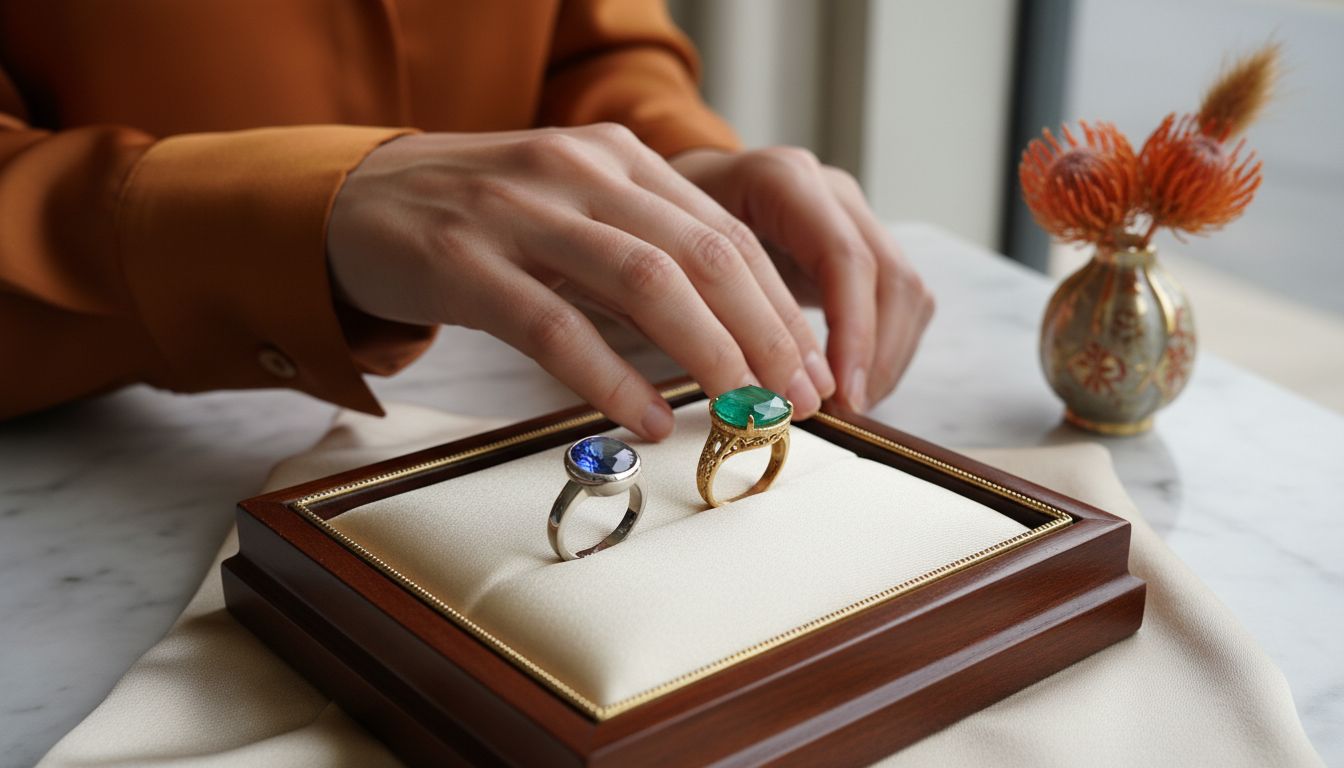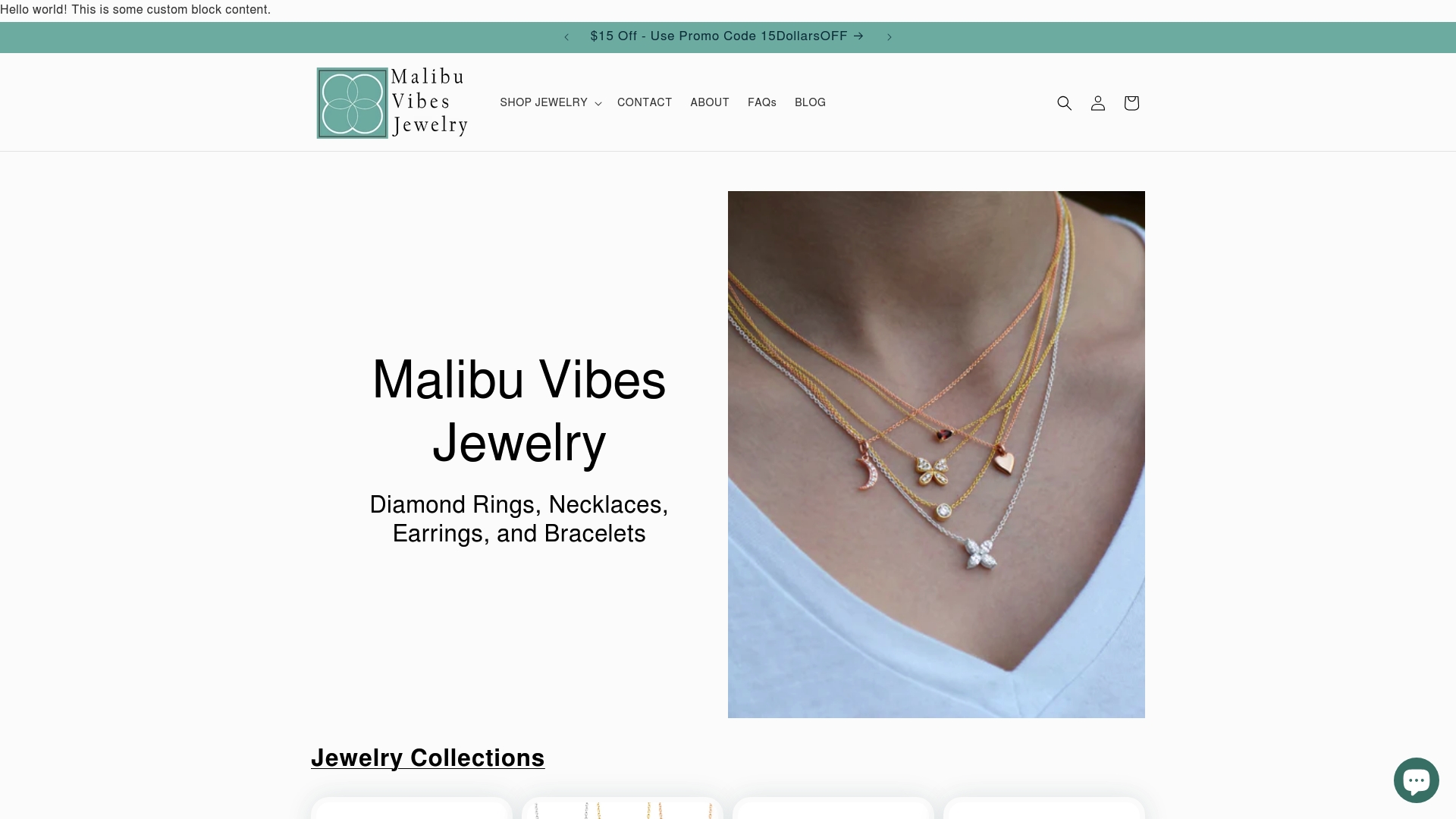Nearly 40 percent of lost gemstones are the result of insecure settings, highlighting how much protection matters when choosing jewelry. Whether you are shopping for an engagement ring or updating your favorite accessory, the way a stone is set will shape both its beauty and its safety. Understanding bezel settings can help you find the right balance of secure design, sleek style, and daily comfort.
Table of Contents
- Bezel Setting Definition And Essential Concepts
- Types Of Bezel Settings And Key Differences
- How Bezel Settings Secure Gems And Diamonds
- Benefits And Drawbacks Of Bezel Setting Jewelry
- Comparing Bezel Setting To Other Styles
Key Takeaways
| Point | Details |
|---|---|
| Bezel Settings | Offer maximum stone protection by encasing gemstones with a metal border. |
| Design Variations | Include full, partial, open-back, and closed-back styles, catering to aesthetics and functionality. |
| Benefits | Ideal for active lifestyles, they minimize risks of snagging and damage to delicate stones. |
| Comparative Advantage | Distinct from prong and tension settings, bezel settings prioritize durability over light performance. |
Bezel Setting Definition and Essential Concepts
A bezel setting is a sophisticated jewelry technique where a metal rim securely encircles a gemstone’s entire perimeter, creating a sleek and protective mounting. According to Gemological Institute of America (GIA), this setting method involves a metal band that wraps around the stone’s girdle, offering exceptional protection and security for various gemstone cuts.
Bezel settings distinguish themselves through their unique design characteristics. Unlike prong settings that use metal points to hold stones, a bezel setting creates a smooth metal border that completely surrounds the gemstone. Gem Society notes this approach provides more comprehensive stone protection but may slightly reduce the stone’s light reflection compared to more open settings.
Key features of bezel settings include:
- Maximum stone security
- Reduced risk of snagging or catching on clothing
- Excellent protection for softer or more fragile gemstones
- Versatile design compatible with various stone shapes
- Modern, streamlined aesthetic
Designers often choose bezel settings for both practical and aesthetic reasons. The continuous metal rim not only shields the stone’s edges but also creates a clean, contemporary look that works beautifully with different ring styles and gemstone cuts.
Types of Bezel Settings and Key Differences
Bezel settings offer remarkable versatility, with distinct variations that cater to different aesthetic and functional preferences. According to the Gemological Institute of America (GIA), these settings can be crafted as either open-back or closed-back designs, each influencing the stone’s visibility and light interaction.
Gem Society highlights two primary bezel setting categories that jewelry enthusiasts should understand: full and partial bezels. Full bezel settings completely encircle the gemstone, providing maximum protection and creating a sleek, modern look. Partial bezel settings, in contrast, cover only portions of the stone’s perimeter, allowing more light to enter and potentially enhancing the gemstone’s brilliance.
Key types of bezel settings include:
- Full bezel (complete stone enclosure)
- Partial bezel (strategic stone coverage)
- Open-back bezel (increased light performance)
- Closed-back bezel (complete stone protection)
- Tube setting: A contemporary variation where a tapered or straight tube encases the stone
When selecting a bezel setting, consider your priorities. For delicate stones or active lifestyles, a full bezel offers unparalleled protection. For those prioritizing light performance, a partial bezel or open-back design with specific gemstone cuts might provide the ideal balance of security and sparkle.

How Bezel Settings Secure Gems and Diamonds
The bezel setting represents a pinnacle of gemstone security, offering unparalleled protection for precious stones. According to the Gemological Institute of America (GIA), the setting’s mechanism involves carefully shaping a metal rim to precisely fit around the gemstone’s girdle, then soldering it onto the mounting. This intricate process ensures the stone is held firmly and strategically.
Gem Society explains that the bezel setting’s security comes from its unique design of encircling and pressing metal edges directly over the stone. This method not only holds the gem firmly but creates a protective shield around its most vulnerable areas. Metal burnishing is the critical technique where metalwork is carefully pressed and smoothed over the stone’s edges, creating a seamless and secure installation.
Key security advantages of bezel settings include:
- Complete circumferential stone protection
- Reduced risk of accidental stone displacement
- Minimized exposure of stone edges to potential impacts
- Enhanced durability for softer or more fragile gemstones
- Optimal protection for stones with irregular shapes
For those with active lifestyles or professions requiring hand mobility, bezel settings offer exceptional gem protection. Particularly for delicate stones like opals or emeralds, this setting provides a robust defense against daily wear and potential damage. When considering your next piece of jewelry, understanding how diamond settings impact stone security can help you make an informed decision.
Benefits and Drawbacks of Bezel Setting Jewelry
Bezel settings represent a sophisticated compromise between aesthetic appeal and practical jewelry design. According to Gem Society, these settings offer enhanced protection by encasing gemstone edges in metal, making them particularly attractive for individuals with active lifestyles or those seeking durable jewelry pieces.
The Diamond Authority highlights both the advantages and potential limitations of bezel settings. The design provides a secure hold that significantly reduces the likelihood of stone displacement, while simultaneously offering a sleek, contemporary aesthetic that can elegantly conceal minor stone imperfections.
Key benefits of bezel settings include:
- Maximum stone protection
- Reduced risk of snagging on clothing
- Modern, streamlined appearance
- Ideal for active wear
- Excellent for softer or more fragile gemstones
However, potential drawbacks exist. The additional metal coverage can slightly diminish a stone’s brilliance by limiting light reflection, and the setting may require more metal, potentially increasing the overall cost. When considering your next jewelry investment, understanding these nuanced trade-offs becomes crucial. Exploring fine jewelry investment strategies can help you make an informed decision that balances aesthetic preferences with practical considerations.
Comparing Bezel Setting to Other Styles
Jewelry settings each tell a unique story of design and functionality, with bezel settings standing out as a particularly distinctive option. According to Gem Society, bezel settings distinguish themselves from traditional prong settings through their comprehensive stone protection and sleek modern aesthetic, offering a compelling alternative for those seeking both style and durability.
The primary differences become evident when comparing structural approaches. Gem Society highlights that while tension settings hold stones between metal bands allowing maximum light performance, bezel settings completely encircle the gemstone with metal, prioritizing protection over maximum brilliance. Prong settings, in contrast, use metal tips to grip stones, allowing more light entry but providing less overall protection.
Key comparative features include:
- Bezel Setting: Maximum stone protection, modern look
- Prong Setting: Enhanced light performance, classic appearance
- Tension Setting: Minimalist design, maximum stone visibility
- Channel Setting: Secure multiple stones, smooth profile
When selecting a setting, consider your lifestyle and aesthetic preferences. For those with active routines or professions requiring hands-on work, the robust protection of bezel-set jewelry offers unparalleled security. Each setting represents a unique balance between aesthetic expression and practical functionality, making your choice a deeply personal decision.
![]()
Here’s a comparison of popular jewelry setting styles:
| Setting Type | Main Advantage | Light Performance | Protection Level |
|---|---|---|---|
| Bezel | Maximum stone security | Moderate (less light) | Excellent |
| Prong | Classic brilliance | High (more light) | Moderate |
| Tension | Minimalist, modern appearance | Very high (open sides) | Lower |
| Channel | Secures multiple stones | Moderate | Good |
Discover the Perfect Balance of Style and Security with Bezel Settings
If you value both the elegant protection of your gemstones and a sleek, modern look, bezel settings offer the ideal solution. This setting style wraps your precious stones in a secure metal rim, minimizing the risk of damage or snagging while maintaining a sophisticated appearance. Whether you are choosing jewelry for everyday wear or special occasions, understanding how bezel settings provide maximum stone security is essential.
Explore our curated selection of Bezel Jewelry - Malibu vibes Jewelry to find pieces that fuse craftsmanship with durability.

Elevate your jewelry collection with pieces that protect and shine in equal measure. Visit Malibu Vibes Jewelry now to shop our expertly handcrafted designs. Don’t miss out on the perfect blend of beauty and resilience crafted just for you.
Frequently Asked Questions
What is a bezel setting in jewelry?
A bezel setting is a jewelry technique where a metal rim encircles the entire perimeter of a gemstone, providing a secure, protective mounting while creating a sleek design.
What are the different types of bezel settings?
There are several types of bezel settings, including full bezel (complete stone enclosure), partial bezel (covering portions of the stone), open-back bezel (increased light performance), and closed-back bezel (complete stone protection).
What are the benefits of a bezel setting for gemstones?
Bezel settings provide maximum stone security, reduced risk of snagging or catching on clothing, excellent protection for fragile gemstones, and a modern aesthetic.
How does a bezel setting compare to other jewelry settings?
Compared to prong settings that prioritize light performance, bezel settings offer better stone protection. Tension settings allow maximum visibility but provide less security, while channel settings can secure multiple stones with a smooth profile.
Recommended
- 7 Types of Gemstone Settings Every Jewelry Lover Should Know – Malibu Vibes Jewelry
- Solitaire Ring Explained: Styles, Diamonds, and Value – Malibu Vibes Jewelry
- 7 Essential Types of Gemstone Cuts Every Jewelry Lover Should Know – Malibu Vibes Jewelry
- 7 Essential Types of Gemstone Cuts Every Jewelry Lover Should Know – Malibu Vibes Jewelry
- How to Wear Statement Jewelry for Special Events - DressMeUpNY


